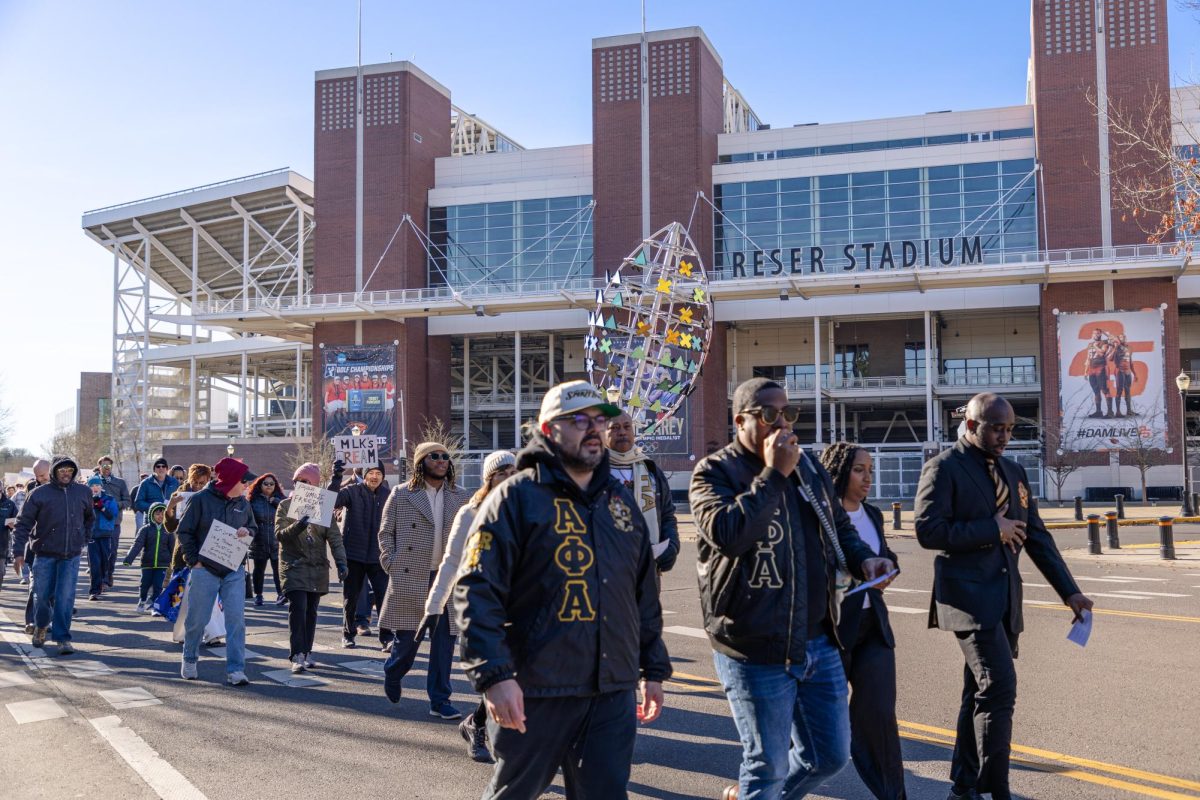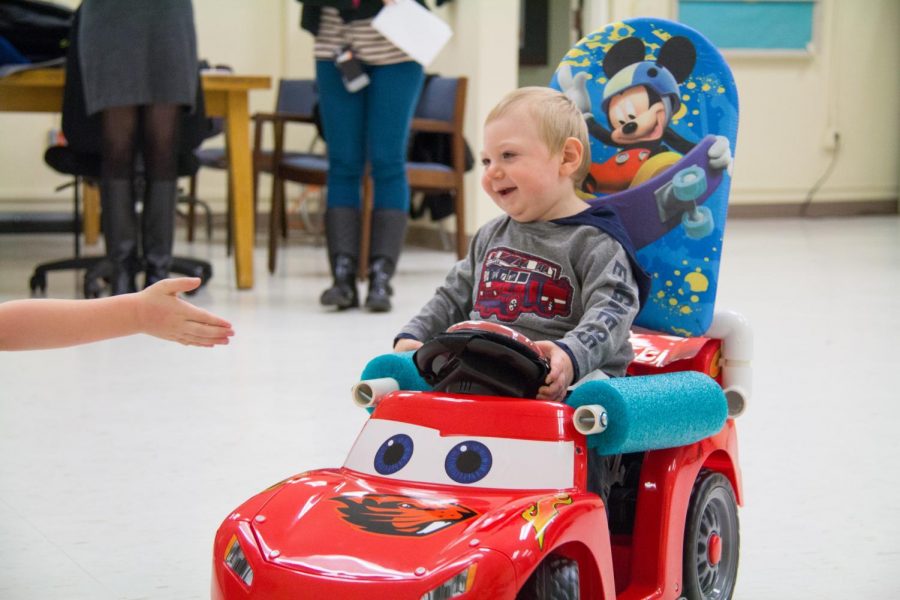Reducing negative impacts of disability
May 10, 2016
Researchers at Oregon State University are focusing on how social interactions differ between children with disabilities and typically developing children, according to Erika Cook, an OSU researcher for the study.
Researchers suspect that children with disabilities are less likely to be able to socialize with other children due to their lack of mobility. They hope to find that giving them motorized assistance will help attract other kids to them and for them to be able to play with other kids.
“We think a lot of that has to do with the mobility, in terms of being able to get from one place to another,” Cook said. “So, whereas a typically developing toddler would be able to walk from one area to another, direct their own play exploration, there’s children with disabilities that don’t have that option until much later in their development.”
According to Cook, because this is being studied this for the first time, researchers are not able to predict what they are going to find.
“I think what we’re going to learn from it is going to be able to fuel more inclusive playgroups over the coming years,” Cook said.
The research is ongoing and working with normally developing children and children with disabilities between the ages of one and four. For the first six weeks of the study, the children were allowed to play however they wanted, according to Cook.
“We took the Women’s building gym and we took half of it,” Cook said. “We used those foam puzzle piece mats and we built basically a big checkerboard where they could play and so there were all sorts of toys on the mat and we just let the kids free-play.”
For those six weeks, researchers noticed that kids with disabilities would stay in one spot, and if they needed a toy, they would have someone bring it to them.
For the next 12 weeks, the children with disabilities were allowed to ride in electric cars around the gym. This allowed researchers to see how the cars change how the kids interact with one another, according to Kelsey Inskeep, an OSU researcher for the study.
Currently, the researchers are reviewing the data from the study, coding their footage and putting it in an excel spreadsheet. The researchers expect the study to be finished sometime this summer, according to Cook.
According to Samantha Ross, a first year Ph.d Student and researcher on the project, 60 percent of the population has vision impairment, a disability that used to affect the social development in kids. However, due to the widespread availability of eyeglasses, having vision impairment is not a disability. Ross hopes that the research will be able to have the same impact on kids with walking disabilities.
“We’re talking about culture here and we’re talking about disability as being something we create as an environment. So, if right off the bat, in early childhood, you’re providing equal access, then you’re reducing the negative impacts of disability,” Ross said.
With the cars, a child can play with their peers. They can also run around and be active around their family. Long term benefits include social, cognitive and language development. All of those skills are important for academic and vocational success, according to Ross.
“It just kind of builds up on itself, long term,” Ross said.
This study continues the work done by Children’s Adaptive Resources for Social Mobility, or CARS, according to Inskeep. CARS provides electric cars modified to the needs of disabled children. To date, CARS has provided 180 of these vehicles to Oregon children in need.
As well as the benefit to the children, Cook also enjoyed observing the parents.
“It’s been really neat to watch parents get to meet each other in some different situations and be able to build those support groups,” Cook said.












































































































